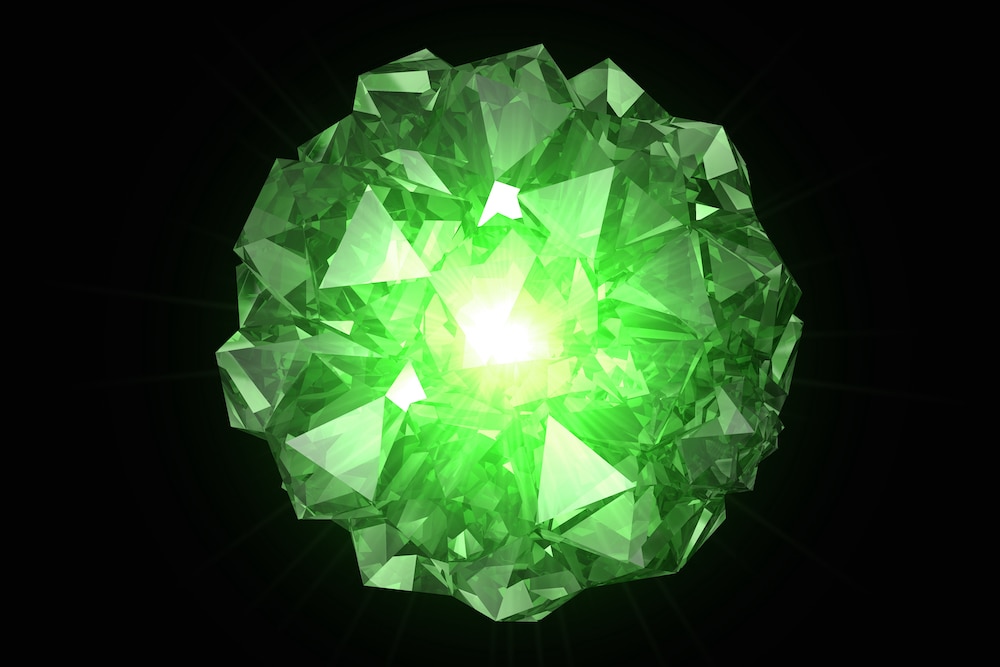Create a free profile to get unlimited access to exclusive videos, sweepstakes, and more!
Kryptonite? Almost. Krypton deep in Earth is a relic of its even deeper past
It's not actually Kryptonite, but Superman should beware of the krypton in Earth's mantle and atmosphere.

Superman should be relieved he didn’t land on Earth when it was just forming, because the closest thing to Kryptonite that is found on this planet was everywhere.
So it's not actually Kryptonite (Clark Kent would be relieved to see that in The Daily Planet), but isotopes of the element krypton (Kr) found in Earth’s mantle and regurgitated by geysers are demystifying Earth’s formation. Some of these isotopes are extremely rare. They can give away how our planet was formed by solar wind as well as asteroids, comets, and possibly other bizarre objects that crawled in from the eldritch outskirts of the solar system.
Krypton isotopes can tell us what Earth formed out of and which volatiles — easily evaporating substances like water or nitrogen — journeyed over here when it was still a nascent planet. It was thought that volatiles only arrived after the massive impact that the Moon emerged from. Researcher Sandrine Péron, who led a study recently published in Nature, found out that wasn’t actually what happened. It was space rocks from the edge of the solar system that brought volatiles to Earth when they crashed into it eons before the Moon existed.
“We used new methods to precisely measure mantle krypton,” she told SYFY WIRE. “This involved concentrating mantle krypton nearly free of air contamination, a new cryogenic cold trap to separate krypton from argon and xenon, and a new multi-collector mass spectrometer.”
Because various krypton isotopes are evidence for the presence of other volatiles and whatever else made Earth what it is now, these methods were how Péron and her team found out that Earth got its volatiles way before there was a Moon. They had to isolate mantle krypton from atmospheric krypton. Material in the mantle is what would have been affected by early collisions. Rocks with vesicles, or bubbles, that contained mantle krypton and other gases helped, but more common atmospheric krypton had apparently sneaked into some of these.
Any gases trapped in vesicles were released by crushing the rocks. Most of these were fragments of basaltic glass, which formed from the bubbling magma which covered young Earth as it cooled. Neon isotopes, which gave away whether there was contamination from gases in the atmosphere, were also analyzed. Atmospheric gases were pumped away. If none were found, krypton was then frozen on a cold trap and separated from argon, which is much more common in the mantle. The krypton that accumulated revealed what its signal looked like.
“The isotopic fingerprint of krypton in the Earth’s deep mantle is a mixing between krypton from the atmosphere (about 50%) and krypton from chondritic meteorites (about 50%), with carbonaceous chondrites (from the outer solar system) providing the closest match,” Péron said.
Using a next-gen mass spectrometer allowed Péron to precisely measure up to 6 krypton isotopes simultaneously. This is where plate tectonics come in. When plates subduct (slide under other plates), krypton, argon, and xenon in the atmosphere are taken back into the mantle. Something that showed what kind of meteorites krypton probably came from was the neutron-rich isotope Kr-86. The lack of this isotope in non-volatile mantle substances suggests that they came from the protoplanetary haze of gas and dust in which our planet was born.
Because there is not much Kr-86 in known meteorites, it could also mean that hypothetical primitive meteorites could have brought in both that isotope and many of Earth’s volatiles from far away. There are certain ices that can only form at extremely cold temperatures in the distant reaches of the solar system. CO2 ice is one of those, and carbon is a volatile. It could be that some carbonaceous chondrites whose existence hasn’t been proven yet brought volatiles over. Comets, which are also deficient in Kr-86, could have been another source of volatiles.
“Deep mantle krypton may be explained by a specific group of carbonaceous chondrites with a deficit in Kr-86,” said Péron. “However, the precise Kr isotopic compositions of different types of carbonaceous chondrites and other meteorites have not been determined yet.”
Mantle and atmospheric ratios of krypton are also mismatched, but why? What Péron found was that atmospheric krypton couldn’t have come from the depths of Earth because krypton isotopes there are too heavy, meaning volatiles in the atmosphere must have come from something or somewhere else. That something else couldn’t have been the same meteorites that possibly brought it to the mantle. It also has to have happened after the colossal impact which ended up forming the Moon, because the ratio would have been even otherwise.
Maybe Superman will want to rethink ever returning to Earth if there is krypton in the air and inside the planet.


























